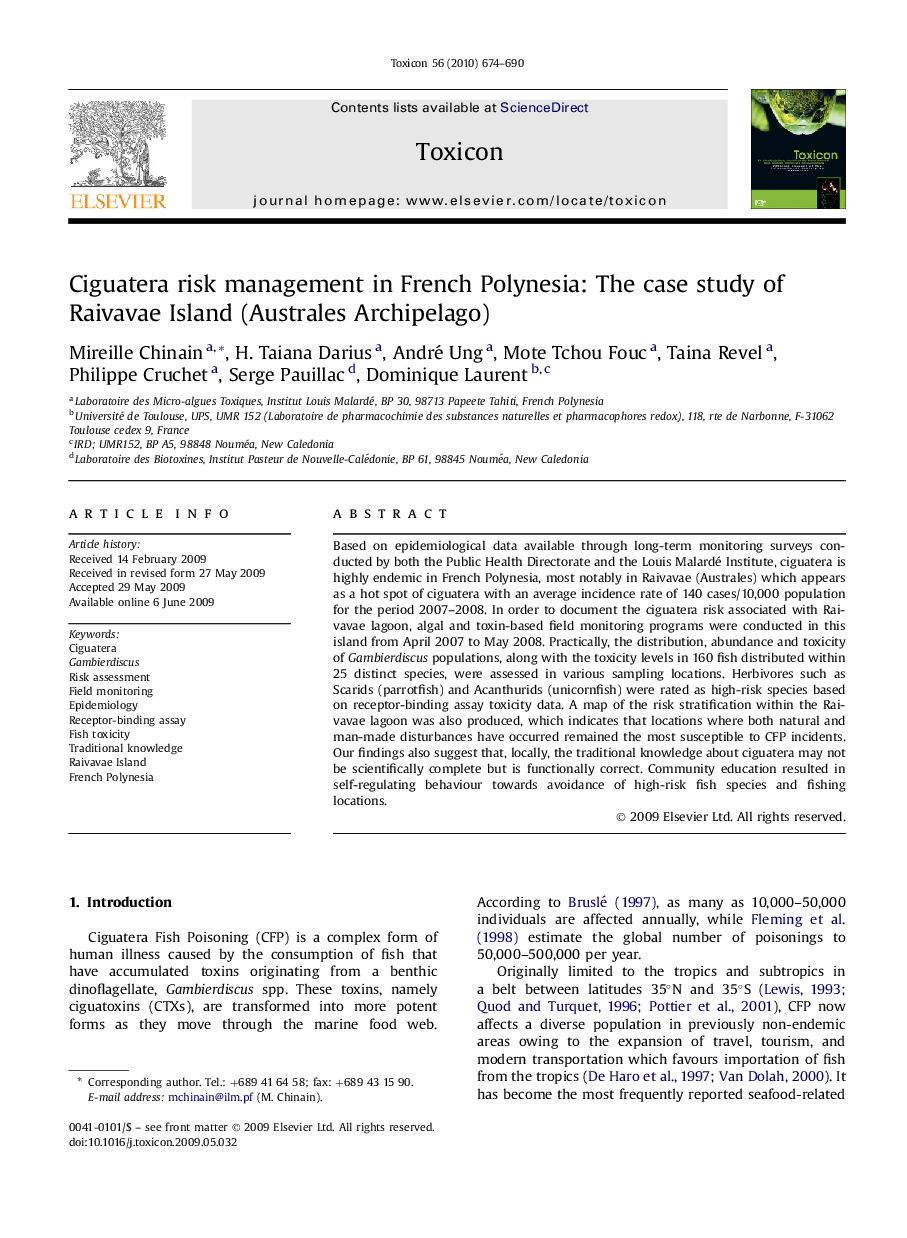| کد مقاله | کد نشریه | سال انتشار | مقاله انگلیسی | نسخه تمام متن |
|---|---|---|---|---|
| 2065630 | 1076931 | 2010 | 17 صفحه PDF | دانلود رایگان |

Based on epidemiological data available through long-term monitoring surveys conducted by both the Public Health Directorate and the Louis Malardé Institute, ciguatera is highly endemic in French Polynesia, most notably in Raivavae (Australes) which appears as a hot spot of ciguatera with an average incidence rate of 140 cases/10,000 population for the period 2007–2008. In order to document the ciguatera risk associated with Raivavae lagoon, algal and toxin-based field monitoring programs were conducted in this island from April 2007 to May 2008. Practically, the distribution, abundance and toxicity of Gambierdiscus populations, along with the toxicity levels in 160 fish distributed within 25 distinct species, were assessed in various sampling locations. Herbivores such as Scarids (parrotfish) and Acanthurids (unicornfish) were rated as high-risk species based on receptor-binding assay toxicity data. A map of the risk stratification within the Raivavae lagoon was also produced, which indicates that locations where both natural and man-made disturbances have occurred remained the most susceptible to CFP incidents. Our findings also suggest that, locally, the traditional knowledge about ciguatera may not be scientifically complete but is functionally correct. Community education resulted in self-regulating behaviour towards avoidance of high-risk fish species and fishing locations.
Journal: Toxicon - Volume 56, Issue 5, October 2010, Pages 674–690